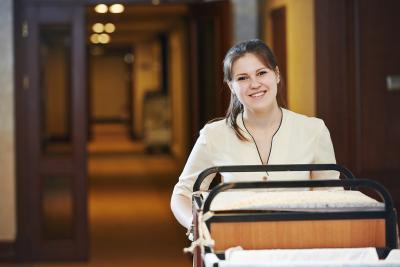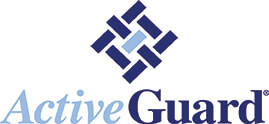Bed bugs certainly do not discriminate. According to a recent study, a five-star luxury resort can be stricken with a bed bug infestation as easily as a roadside stop. It is wise to include weekly bed bug inspections on the ‘to do’ list of your housekeeping staff to uncover a problem before your guests are confronted.
The objective of the inspection is to find bed bugs and/or signs of activity. Remember that bed bugs like to rest in small, tight spaces so don’t forget to inspect those as you probe. The headboard and bed skirt are two highly important areas to inspect because neither of these are disturbed when the room is serviced.
Consider adding the following steps to your housekeeping staff’s duties:
Use a good flashlight to help you with your inspection.
Begin with gentle exhales along the top corners and sides of the headboard. Bed bugs are drawn to gently applied carbon dioxide contained within your breath.
Use the flashlight to look at the edges of the headboard a couple times during the inspection, looking for moving bed bugs. Slide a credit card along the headboard and the attached wall to see if you collect any signs of bed bugs (eggs, fecal matter and shed outer skeletons). Remember, if a credit card can slide through so can a bed bug.
Pull back the bedding, one piece at a time, from each of the two corners at the head of the bed, once again looking for signs of bed bugs.
Next, inspect the mattress edges at these two corners focusing on the rolled edges, tufts, and any labels or handles attached to the mattress. Lift the top corners of the mattress and inspect underneath—you usually will see the top of the bed skirt under the mattress.
Note that this inspection is focused upon the bed and upholstered furniture, where bed bugs are most likely to find harborage. Any additional inspection areas would offer results that are more reflective of the room’s bed bug status.
Notify management immediately should any sign of bed bugs be found. Immediately take the room out of service and work together with a professional pest management firm to gain control of the infestation so that the room can be returned to service. Ensure that your service professional uses ActiveGuard® Mattress Liners on the mattress and/or box spring to extend the control of your heat or chemical treatment and also to offer prevention against future bed bug outbreaks. To learn more or purchase ActiveGuard, visit us online.
About Allergy Technologies
ActiveGuard Mattress Liners kill bed bugs. Easily installed on mattresses or box springs, these liners offer two-year continual prevention and control against any adult bed bugs, nymphs or eggs. ActiveGuard has no cautionary signal words or use restrictions on its label. Only four sizes—single/twin, double/full, queen and king—fit almost every available mattress or box spring, and accommodate up to extra-large in length and 17-in. in depth. Underlying is ActiveGuard’s formulation; a unique and proprietary delivery system that offers sustained bioavailability of permethrin for two years. Newest research supports that after a short exposure to ActiveGuard of only 10 minutes, bed bugs regardless of their level of resistance, begin to show significant reductions in feeding (biting) and a dramatic inability to lay eggs. This results in discontinuation of population growth thereby halting progression of an incident to an infestation. If you are seeking a pro-active preventative approach, ActiveGuard should be considered as the centerpiece of your long-term solution to keep bedding from being infested. ActiveGuard Mattress Liners are covered under U.S. Patents 5,916,580, 6,214,365, 6,440,438 and pending patents.
Learn more about Bed Bug Prevention here:





